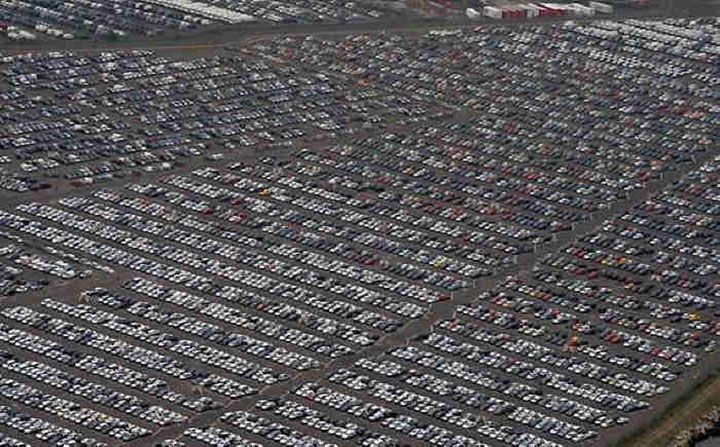
Looking at a picture like this — one that’s been making the social-networking rounds lately, for sure — you’d think you were looking at a traffic jam, or the parking lot of some long-awaited rock reunion. Or something. When you see a mass of chassis and axles sitting side-by-side like this, unmoving, there are very few standards for comparison. It’s like standing room only for the car-zombies of the apocalypse.
Only not quite. What you’re seeing are the hidden corners near Sheerness, UK, close to the windswept shores of the English Channel. Not far from London, it’s a place where history looms ghost-like, where the megalith of England’s largest city fades into a rural balance, and — notably — where thousands of people live in the shadow of history.
But it’s more than that. It’s also where many of the world’s cars go to die.
So that probably makes the “history” angle a little more appropriate — if darkly — than intended, considering how many refugees of the automotive era have found their final resting place here. As reported, it’s not just a boneyard, but an Island of Misfit Cars, so to speak. “Thousands upon thousands” of cars rest here, sitting side by side. If nothing else, it’s a filing cabinet for the unsold, overlooked beasts of recent automotive history, especially during the post-2007, post-automotive twilight years. Here, on the bucolic shores opposite the Netherlands, rest the remains of an industry — unless someone makes a change.
In that respect, it’s a reminder.
See, that’s the thing: change. A place like the car-yards of Sheerness could be looked at as an afterthought, but by the same token, they could be taken as some sort of cautionary tale — a physical, visible indication of the consequence of waste. Which — let’s just throw this out there — are many, and more dire by the day. It’s almost like change is a foregone conclusion, but it’s been that way for about seven years now.
Back in 2007, the bottom dropped out of that industry. Still, the voracious appetite of the West for car after truck after van after tank-sized SUV kept car manufacturing cranking away, turning out product after product. By the day, week, month, and — eventually — by the overworked year, cars kept filling car lots, and vehicle loans kept coming in. But remember the housing market collapse of 2008? Like that unfortunate event, the volume can’t sustain itself, at least not without a cost.
In the automotive world, that cost tends to be human — the tens of thousands of people whose jobs have been lost to an industry without balance. And yet the race to the bottom continues. Snowballing through the rust belt — to use just one example — the skyrocketing cost of resources drives the industry through the floor. Before long, districts devoted to this most Western ideal of commerce go the way of their industries — and when that happens, everyone suffers.
But at this point, we have so many options it’s not even funny. The contest between the electric car of the early-2000s and big industry isn’t even the most striking anymore. We know what serves our environment. Now let’s talk about what serves our people.
What do you think? By harvesting the resources of our collective genius-brain — don’t blush, you know it’s true — how can we keep our turbulent industrial keel even? We’re so tantalizingly almost there; the concept of a better, more fair industrial future is so close we can taste it, considering what’s out there. 747s powered by biodiesel. Cars shared on a community basis. Crowd-sourced economic justice. Do we start from the top, or do we work our way up from the grassroots?
Start the discussion here. Big ideas have resulted from so much less.
photo: vincelewis.net








